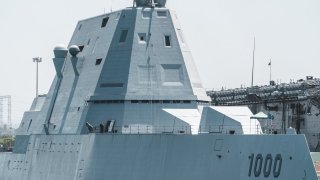The Navy's Zumwalt-Class: Stealth Masterpiece or a Waste of Money?
Since their design process evolved, the Zumwalt-class destroyers have been plagued by equipment issues. In 2016, the lead ship of the class- USS Zumwalt- broke down in the Panama Canal shortly following its commissioning.
Zumwalt-Class Destroyers: All of Your Questions Now Answered - In the final days of 2023, the U.S. Department of Defense allocated additional funds to modernize its Zumwalt-class destroyers.
As part of this $66.7 million decision, the majority of the construction work will occur where Ingalls Shipbuilding is based in Pascagoula, Mississippi.
The next-generation destroyers are expected to replace its aging Arleigh Burke-class predecessors. Several enhancements, including ultra-modern stealth and weapon technologies, are meant to make the Zumwalt vessels the most formidable destroyers to sail the seas.
However, the hefty price tag associated with each ship in addition to the underperformance of the class has previously forced the Navy to pull its support from the Zumwalt.
A Brief History of the Zumwalt-Class Destroyers
The Zumwalt-class ships were derived from the Surface Combatant for the 21st-century research and development program created in the mid-1990s.
Following extensive research, a “tumblehome” design featuring two long-range guns and 128 missiles was selected as the Destroyer for the 21st century (DD-21).
One decade prior, the Navy was forced to reactivate four World War II relic Iowa-class battleships to support Marine Corps amphibious landings. Later, these massive and extremely pricey ships were nixed after the Cold War dissipated.
The service desired the return of a powerful naval gunfire capability around this time, resulting in the Zumwalt-class destroyers, which were designed to fulfil the role of battleships in order to meet a congressional mandate calling for naval fire support.
Specs and Capabilities for Zumwalt
The foundation of the Zumwalt program centered on a pair of 155-millimeter Advanced Gun Systems, rapid-fire six-inch guns and the Long-Range Land Attack Projectile.
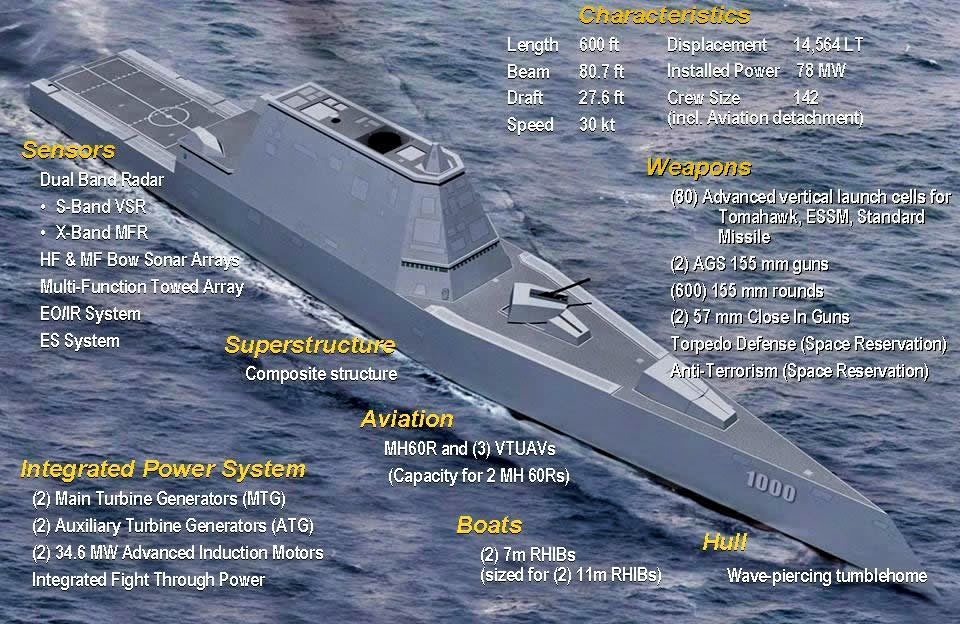
As explained by Popular Mechanics, the LRLAP projectile is uniquely capable of fire-round hits at ranges more than 80 nautical miles. Previous guns that fire shells on a ballistic trajectory are comparatively slow to “walk” onto their target. Additionally, the Advanced Gun System incorporated on the destroyers would be able to fire up to 10 rounds a minute. While the Arleigh Burke-class destroyers initially possessed the first radar signature reducing techniques, the Zumwalt vessels will have even smaller cross-sections making them very challenging for enemy warships to detect.
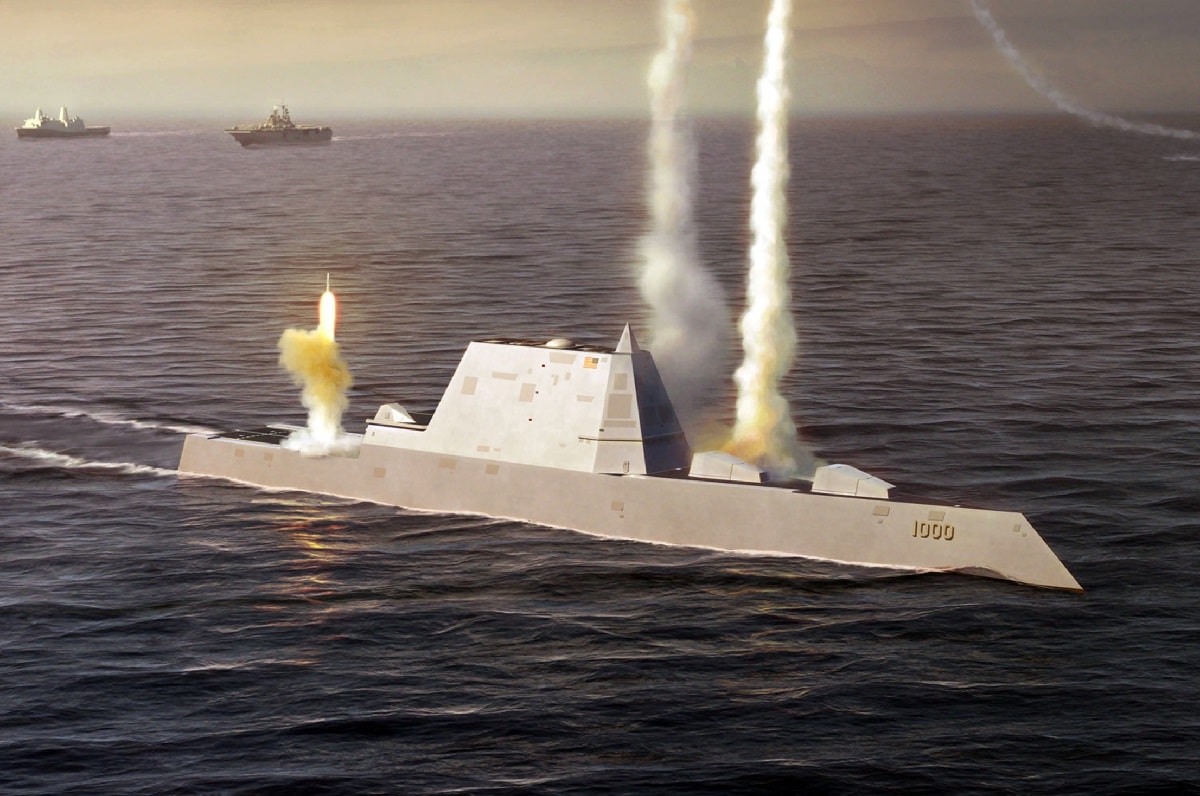
In terms of design, the Zumwalt-class ships feature a “knife-like” bow. This unique configuration makes the boat more stable in poor conditions as compared with other surface combatants. The 600-foot vessel can carry more than 150 crew members onboard. Its superstructure, mast, antennas, radars and other electronics are fully encased in one large trapezoidal tower.
Rolls-Royce MT30 gas turbines and Rolls-Royce RR4500 turbine generators power the large ship, enabling it to travel at speeds in excess of 30 knots with a displacement of roughly 16,000 tons. According to the U.S. Indo-Pacific Command, the Zumwalt-class destroyers produce approximately 78 megawatts of power, similar to the energy generated by nuclear-powered aircraft carriers.
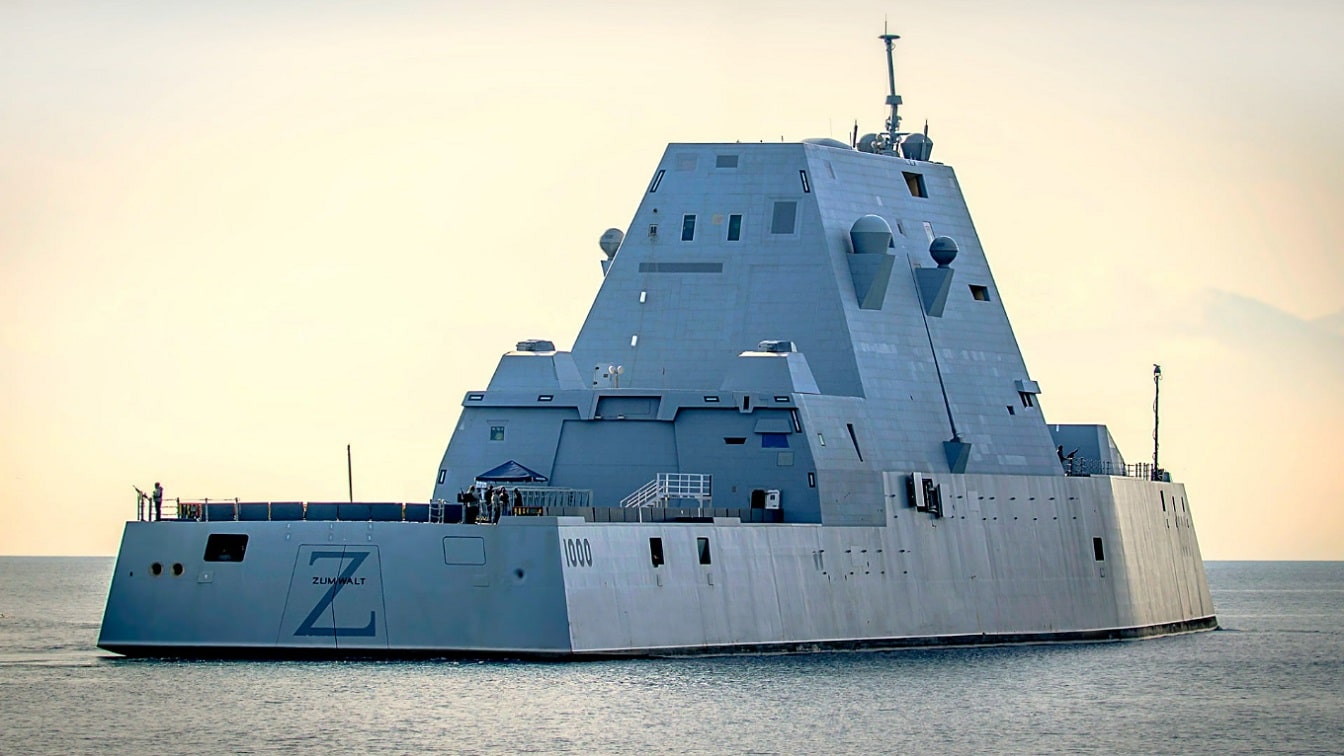
Although the Zumwalts were constructed to serve in land-attack missions, these destroyers are also armed to the teeth. Each ship in this class is fitted with 80 Mark 57 vertical launch systems, which can carry SM-2, SM-6, ASROC anti-submarine rockets, Evolved Sea Sparrow air defense missiles and LRASM anti-ship missiles.
What’s Hindering the Zumwalts’ Progress?
By 2008, the Navy already wanted to ditch building more than two Zumwalt-class ships in favor of producing Arleigh Burke Flight III destroyers equipped with ballistic-missile defense capabilities. Despite this, three ultimately made the docket.
As detailed by Sebastian Roblin, “The need to curb runaway costs led to crippling downgrades. Instead of fitting a powerful SPY-4 volume search radar with a SPY-3 hi-resolution targeting radar, the Navy ditched the former and rejigged the SPY-3 to handle volume-search as well. This saved $80 million per ship but significantly degraded air-search capabilities.”
High Costs and Underperforming Equipment
Since their design process evolved, the Zumwalt-class destroyers have been plagued by equipment issues. In 2016, the lead ship of the class- USS Zumwalt- broke down in the Panama Canal shortly following its commissioning. One year later, the second ship in the class- USS Michael Mansoor- failed its sea trials. Earlier, it was discovered that the Zumwalt’s Advanced Gun System did not perform well, functioning at about two-thirds the forecast range.
Additionally, the LRLAP GPS-guided shells were costing roughly $800,000 each, which is almost the same price as longer-range and more advanced cruise missiles. Essentially, a fleet of only three warships that were delayed by half a decade certainly cannot fulfill their intended mission of striking land targets from afar. Additionally, the modernization of China’s Navy has enhanced the anti-surface mission, perhaps rendering the Zumwalt destroyers as antiquated.
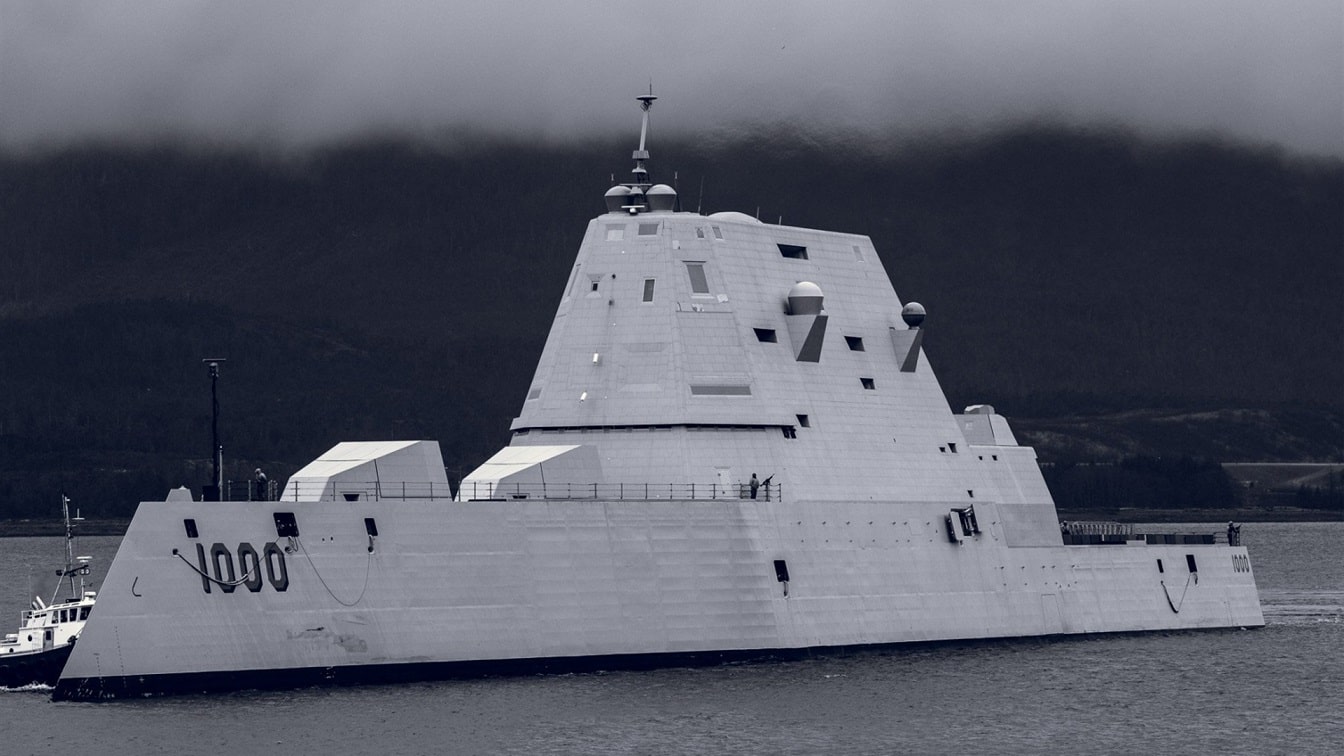
While the Zumwalt-class destroyers are not powerful enough to sink Beijing’s Type 055 guided missile cruisers or similarly advanced warships, the troubled vessels will play a role in any future kinetic conflict with the emerging superpower.
About the Author: Maya Carlin
Maya Carlin, National Security Writer with The National Interest, is an analyst with the Center for Security Policy and a former Anna Sobol Levy Fellow at IDC Herzliya in Israel. She has by-lines in many publications, including The National Interest, Jerusalem Post, and Times of Israel. You can follow her on Twitter: @MayaCarlin.
All images are Creative Commons.


